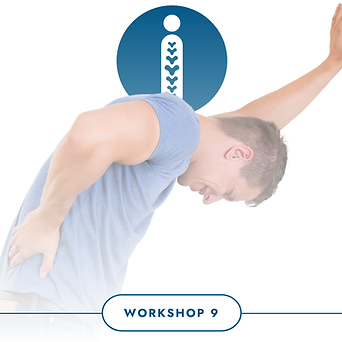ISOM - INTERNATIONAL SCHOOL OF OSTEOPATHIC MEDICINE
ON-DEMAND COURSES
ACADEMIC YEAR

MODULE 1
Fundamentals of Structural Osteopathy
In this module, students learn the basics of osteopathic practice: how to take a medical history, assess posture and mobility, and establish a safe initial treatment plan.
The fundamental articulatory techniques and the HVLA approach to the main areas are introduced: cervical, dorsal, lumbar and rib.
Objective: to gain confidence in manual contact and initial structural techniques, building the foundations for subsequent modules.


MODULE 2
Limbs and Pelvis
This module explores the approach to the upper and lower limbs, the pelvis, and the sacroiliac joint.
The student learns to evaluate the main dysfunctions and to apply targeted articulatory and HVLA techniques, integrating them with structural work on the spine.
Objective: To develop comprehensive practical skills on the limbs and connections with the pelvis, improving the ability to analyze and treat the patient globally.
MODULE 3
Visceral Osteopathy
The module introduces the visceral approach, focusing on the abdomen and pelvis.
The student learns how to assess visceral mobility and viscero-somatic relationships, applying targeted techniques to restore functional balance.
Objective: to integrate structural skills with the first visceral techniques, broadening the osteopathic vision of the patient.


MODULE 4
Cranial Osteopathy
This module introduces the cranial approach: anatomy and physiology of the skull, the primary respiratory mechanism, and basic craniosacral balancing techniques.
The student begins to understand the relationship between the skull, spine and nervous system.
Objective: To acquire the theoretical and practical foundations of cranial osteopathy and integrate them into global clinical reasoning.
MODULE 5
Osteopathy for the Temporomandibular Joint
This module explores the cranial approach with advanced techniques.
Particular attention is paid to the temporomandibular joints and their connections with posture and the stomatognathic system.
Objective: To develop more comprehensive clinical skills in the cranial field, with the ability to treat complex dysfunctions.


MODULE 6
Osteopathy for Pregnant Women
The module introduces the osteopathic approach to pregnant women.
The principles of obstetric assessment and safe, gentle techniques for alleviating common ailments such as low back pain, sciatica, pelvic pain, and diaphragmatic tension are addressed.
Objective: To provide students with the foundation for safely treating pregnant women, adapting techniques to their sensitivity, physiological changes, and the specific needs of this phase.
MODULE 7
Pediatric Osteopathy
This module explores advanced pediatric techniques, with a focus on the child's motor and neurological development.
The student works on real clinical cases to refine manual sensitivity and precision.
Objective: To acquire comprehensive pediatric skills to independently manage various clinical conditions of developmental age.


MODULE 8
Fascial Techniques & Advanced Joint Mobilizations
You will learn to identify fascial restrictions through palpatory testing and tissue reading, and to treat them with manual release techniques to normalize myofascial tension and chains.
The module also includes advanced joint mobilizations, with detailed step-by-step practical demonstrations to refine specificity, dosage and safety, and integrate fascia work with joint mobility.
Objective: To recognize and normalize fascial restriction patterns, integrating advanced joint mobilizations into a comprehensive and safe treatment plan.
MODULE 9
Evaluation and Treatment of Hernias
In this module, you will learn how to address issues related to herniated discs with a targeted osteopathic approach.
The principles of specific assessment, strategies for reducing pain, nerve compression, and stiffness, and safe techniques for promoting mobility and functional rebalancing of the spine will be covered.
Objective: To provide students with practical tools to safely evaluate and treat herniated discs, improving clinical effectiveness and patient quality of life.


MODULE 10
Vestibular System Treatment
Dizziness and balance disorders can significantly impair patients' quality of life.
In this module, you will learn how to evaluate and treat the vestibular system through targeted osteopathic techniques, with the goal of reducing symptoms and improving postural stability.
Objective: To provide practical tools for recognizing and treating vestibular dysfunction, expanding the effectiveness of osteopathic intervention.
2025 CALENDAR
Our in-person courses offer a practical and advanced training path in osteopathy.
With expert instructors and an innovative teaching method, you will develop concrete skills through practical sessions, real clinical cases, and a multidisciplinary approach.
The courses are held in various cities, allowing you to follow the training with flexibility.
Join our community and become an osteopathy professional with ISOM!


